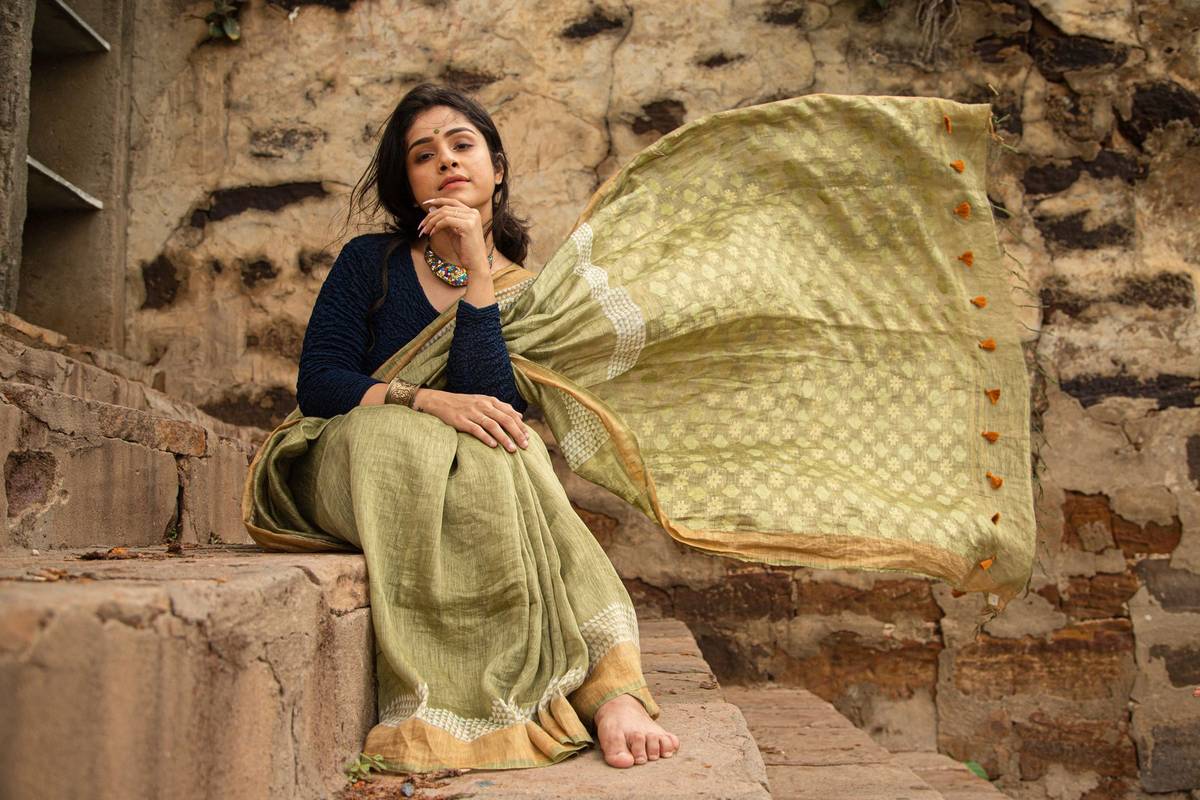
Subscribe and get 10% OFF
Exclusively for FIRST 20 Customers only
Art with the type of hand-painted or block-printed cotton textile, this craft made in Andhra Pradesh has evolved and carved its way to different parts of India.
Kalamkari, the word, simply means craft made by drawing with a pen, kalam (pen) and kari (craftsmanship).
This ancient art of organic fabric painting involves near about 23 tedious steps of dyeing, bleaching, hand and block printing, starching and many more, with the process of painting often being carried out by using natural twigs as a pen.
Incorporating minute details, the Kalamkars make classic renderings with beautiful motifs of vast range, spanning from ornate peacock, flowers, to Raas-Leela, Vishnu, Parvati and many other divine characters and the belongings of Hindu epics inspired from Mahabharata and Ramayana.
This art is primarily used to make sarees and the legacy of this exquisitely hand painted ancient form of art has been passed on from generation to generation.
With it’s history of more than 3 centuries, ‘rogan’ painting is the rare Indian art form, made using the thick coloured paint which is often extracted from castor seed oil.
Originating its nomenclature from Persia, the word ‘rogan’ means oil.
The artisans source the castor crop from farmers around the Kutch region of Gujarat.
Simply put, great ingredients make great food. And the recipe for preparing the perfect blend of paint is heating the castor oil in a vessel and stirring it for more than 12 hours to mixing the desired vivid natural colours, before the paint being stored in clay pots to gain the texture suitable for painting. Voila!
With all the delicacy and precision, ‘rogan’ paintings are created from artist’s own imagination, who prefer sitting on the floor while making this craft. By just using an oversized blunt needles as their tool, to stretch the strands, which they place on the fabric in illustrative patterns. They often place their fingers under the fabric to ease the spread of the paint while shaping the design. In most process, the design is created at one side of the fabric and the cloth is folded later on to give the appealing mirror image on the other side of the fabric.
This wearable canvas form has received commendations from around the world, making it’s way to innumerous mentions in the magazines to the walls of the White House, the official residence of the U.S. president.
The craft of making discharge printed fabrics is a little different from the previous traditional methodologies, however many of the same principles are also implemented.
In this art form, you begin with fully – dyed fabric and then the fabric is treated by applying bleach or discharge ink in patterns to remove the pre-existing colours, which are then filled with different colours.
Considered to be hailing from Gujarat, this form of hand printing has been practiced and perpetuated by the Paithapur families. They make intricate blocks to print their textiles.
The popular designs of block printing in this area are geometric in shapes. The artisans involved in printing the fabric make the most of natural resources available to make colours such as blue from indigo, black from a rusty iron solution and red from beetroot.
Interestingly, the flow and patterns for the fabric are inspired from the geographical areas; We can find the popular patterns of birds, animals and dancing mudra with black and red colours in Kutch, while the saris of Ahmedabad and Baroda have large mango patterns against a red or blue background.
An ancient and the most loved block-printing method on textiles that originated in the present day provinces of Sindh. The word itself has undertones of a number of different concepts.
In this craft, the fabric is first printed with a resist paste and then it is dyed. The process is repeated several times with different varieties of dyes to achieve the final designs in the shades of blue and red.
The longer the time span before commencing on to next stage, the more vivid and vibrant the final print becomes. No wonder the whole process usually takes about two weeks, making the resulting cloth feel soft against the skin and jewel-like in appearance, pleasing to touch & appealing to the eye.
With newest trends rising, where the world is buzzing with “sustainability” and “eco-friendly”, for many centuries, innumerable crafts have co-existed in harmony with nature. Some things so subtle that they do not glare out, yet so vivid that one cannot help but appreciate the aesthetics in their creation. One such craft is the Ajrakh. Today the ajrakh traditions are maintained in the regions of Kutch, Khavda of Gujarat and Barmer in Rajasthan.
With the primary use of wax and dyes to create a touch of magic on fabrics, Batik is a word for elegance that’s known to wrap a beauty in any form of attitude. The term is believed to derive from ‘ambatik’, resembling the patterns of small dots and lines.
To this day, there is no one single community involved in the crafting of Batik clothing. There are artisans from assorted regions who are trained in making this clothing form. Given the diverse culture of India, the artisans bring to fore, patterns and prints which have some influence or the other, of elements or culture of their respective natives, which enables the availability for vast choice of prints.
This craft can range from the simplest to the most superlative, making it the perfect fit for any occasion. Or even when there are none, as the clothing made of feather light silk or cotton can be worn round the year.